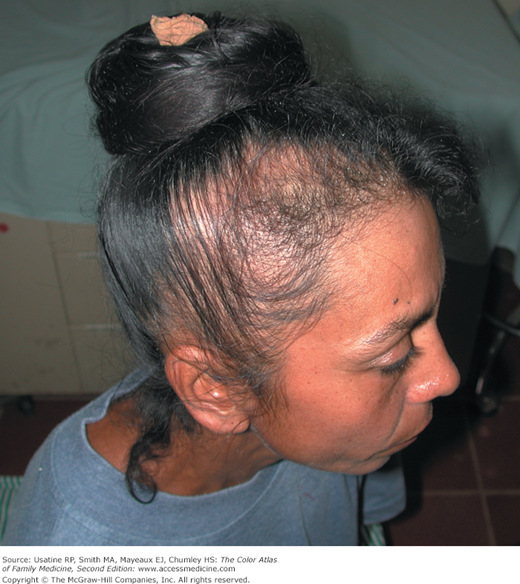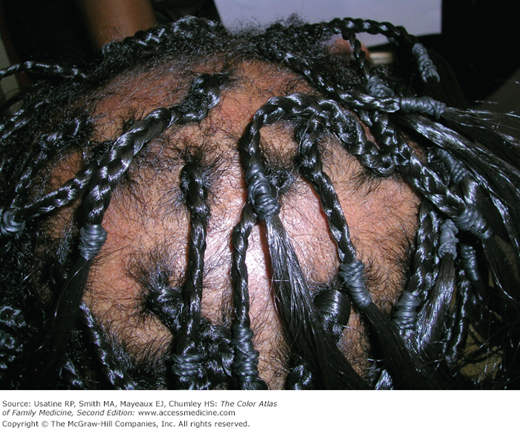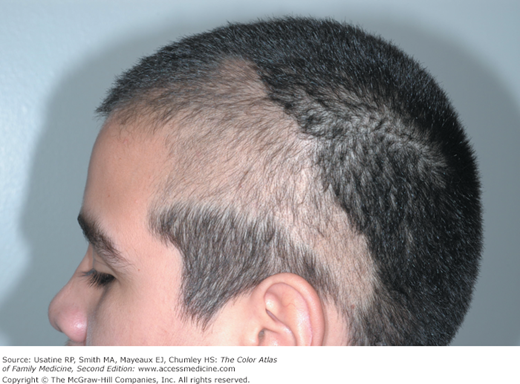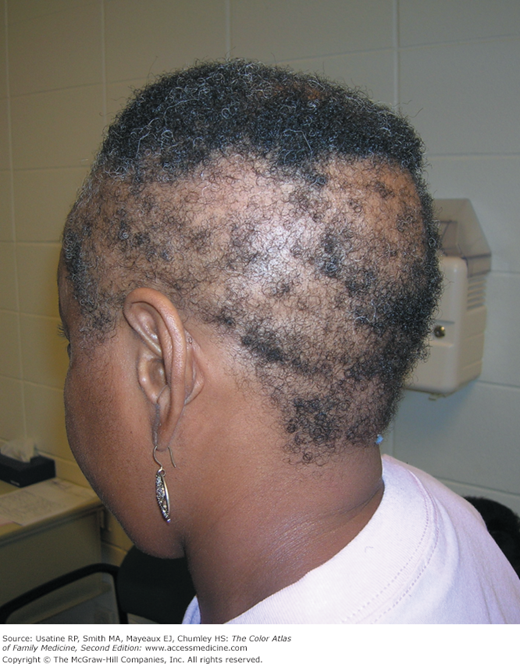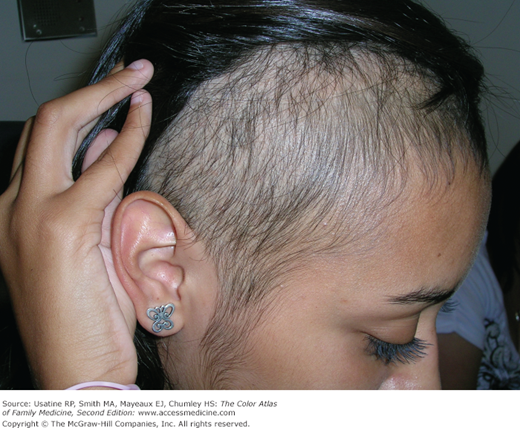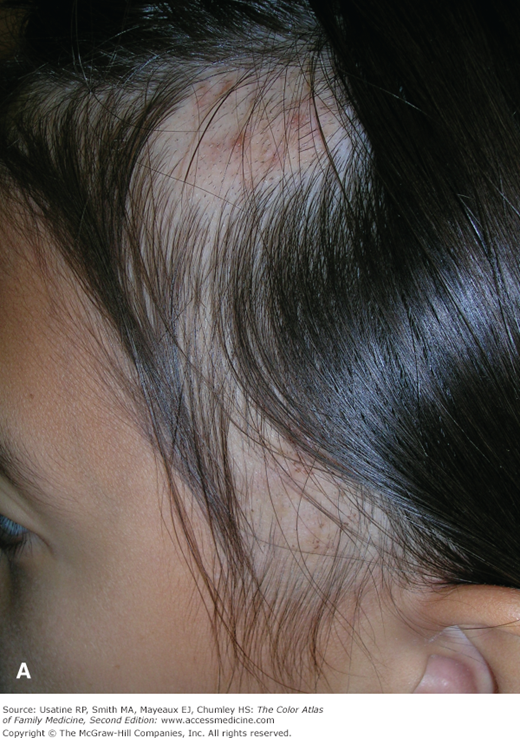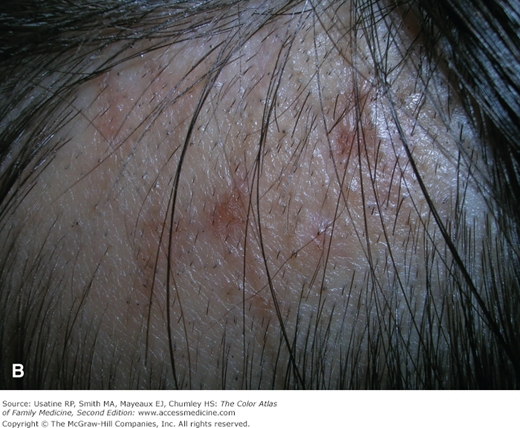Patient Story
A 38-year-old woman was found to have hair thinning on the anterior scalp. She had long thick heavy hair that she always styled in a bun on the top of her head. She was concerned about the slow, steady loss of hair that she was experiencing. Figure 188-1 shows the appearance of the thinned hair as a result of chronic traction. A 4-mm punch biopsy was performed to confirm the clinical impression and the histology was supportive of this diagnosis.
Introduction
Traction alopecia is hair loss caused by damage to the dermal papilla and hair follicle by constant pulling or tension over a long period. It often occurs in persons who wear tight braids, especially “cornrows” that lead to high tension, pulling, and breakage of hair. Trichotillomania (Greek for “hair-pulling madness”) is a traction alopecia related to a compulsive disorder caused when patients pull on and pluck hairs, often creating bizarre patterns of hair loss.
Epidemiology
- The prevalence of traction alopecia (Figures 188-1 and 188-2) is unknown and varies by cultural hairstyle practices. It is most commonly seen in females and children.1
- The prevalence of trichotillomania (Figures 188-3, 188-4, 188-5, and 188-6) is also difficult to determine, but is estimated to be approximately 1.5% of males and 3.4% of females in the United States. The mean age of onset of trichotillomania is 8 years in boys and 12 years in girls, and it is the most common cause of childhood alopecia.2
Etiology and Pathophysiology
- Traction alopecia is seen in individuals who place chronic tension on the hair shafts with tight braids, heavy natural hair, use of hair prostheses, or chronic pulling (Figures 188-1 and 188-2).1

Stay updated, free articles. Join our Telegram channel

Full access? Get Clinical Tree



